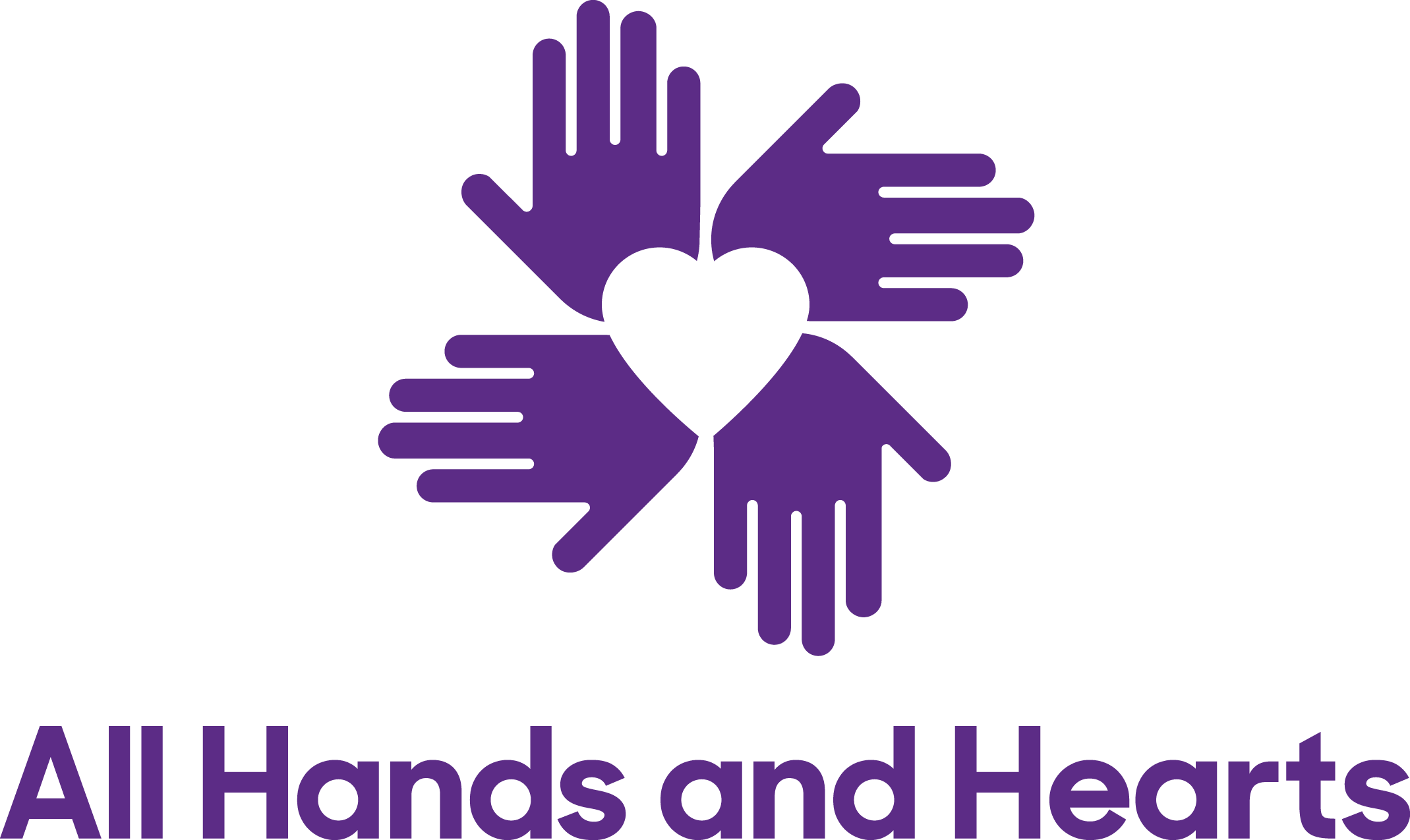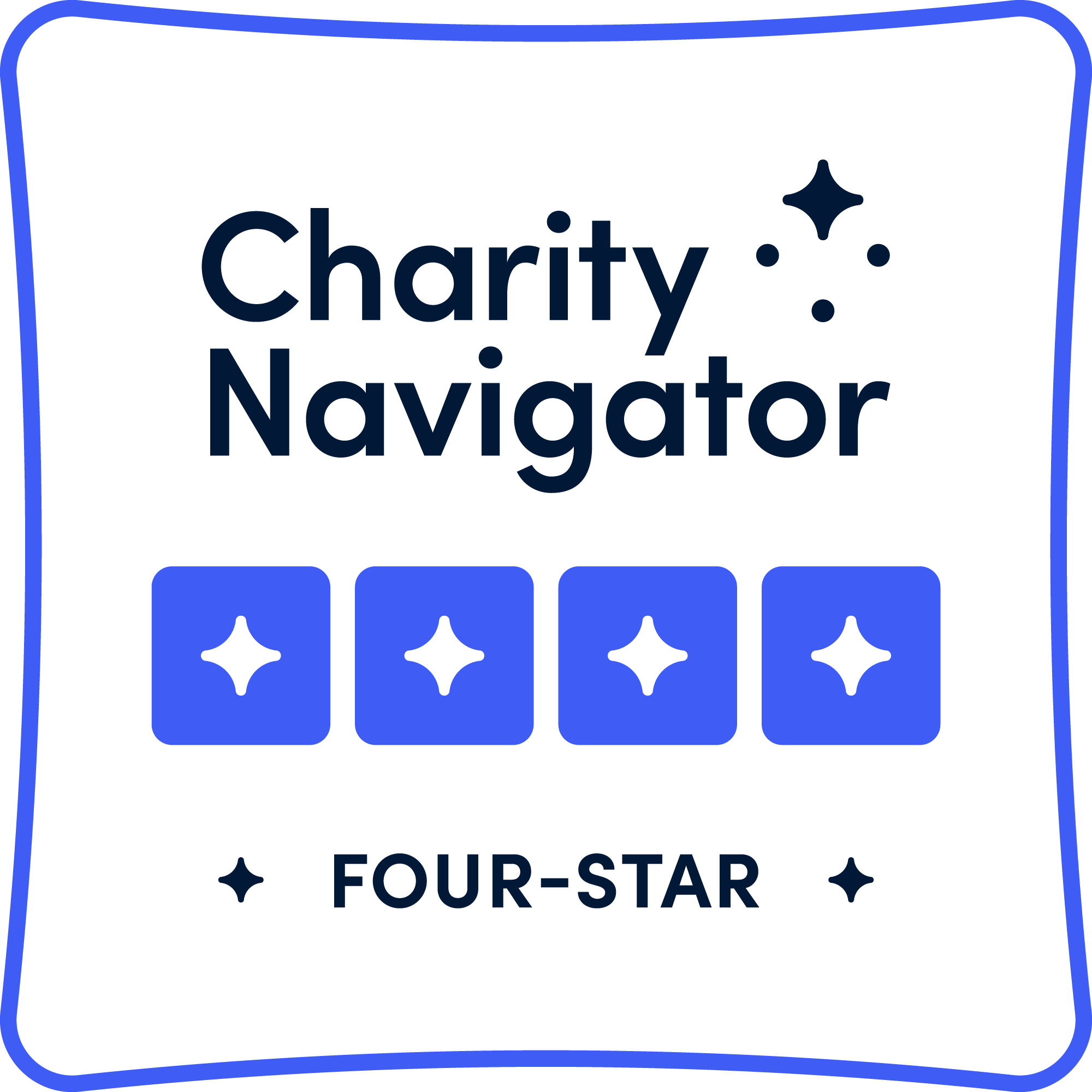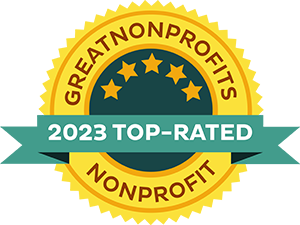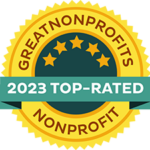a record breaking year
Reflections on 2023 and our commitment for the future
december 20, 2023
In a year that pushed our world to its limits, 2023 demonstrated the escalating impact of disasters worldwide. From the deadly wildfires in Hawaii, the devastating earthquake in Türkiye and the series of storms and hurricanes that ripped across almost every corner of the United States, the need for disaster relief work is evident.
At All Hands and Hearts (AHAH), we are one of the first organizations of our kind to respond to these oft-repeated scenes of devastation and loss, and often, we are the last to leave a slowly recovering community, a transformation we are deeply moved to be a part of. As the year draws to a close, we reflect on our work and reaffirm our commitment to providing community-inspired, volunteer-powered disaster relief.
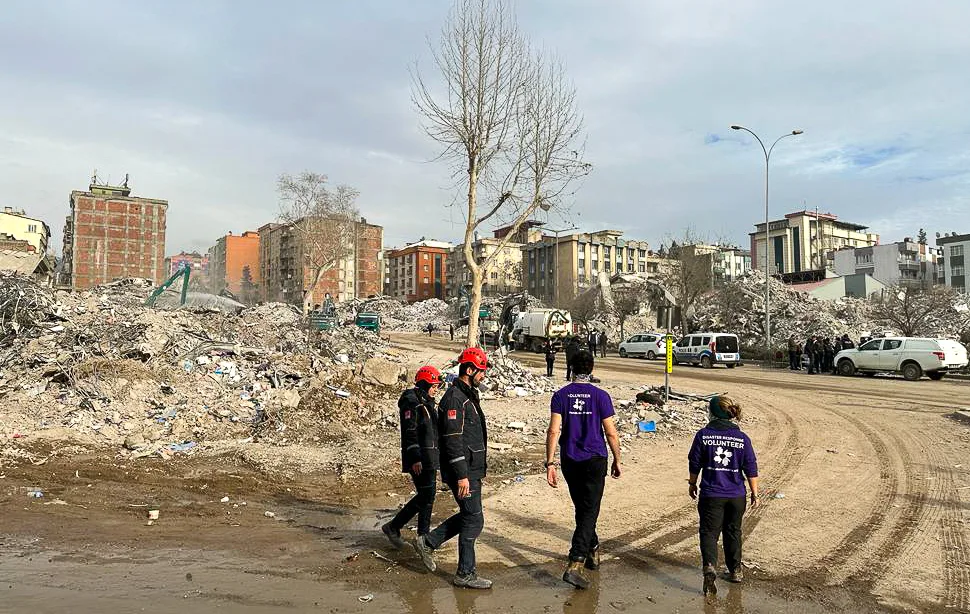
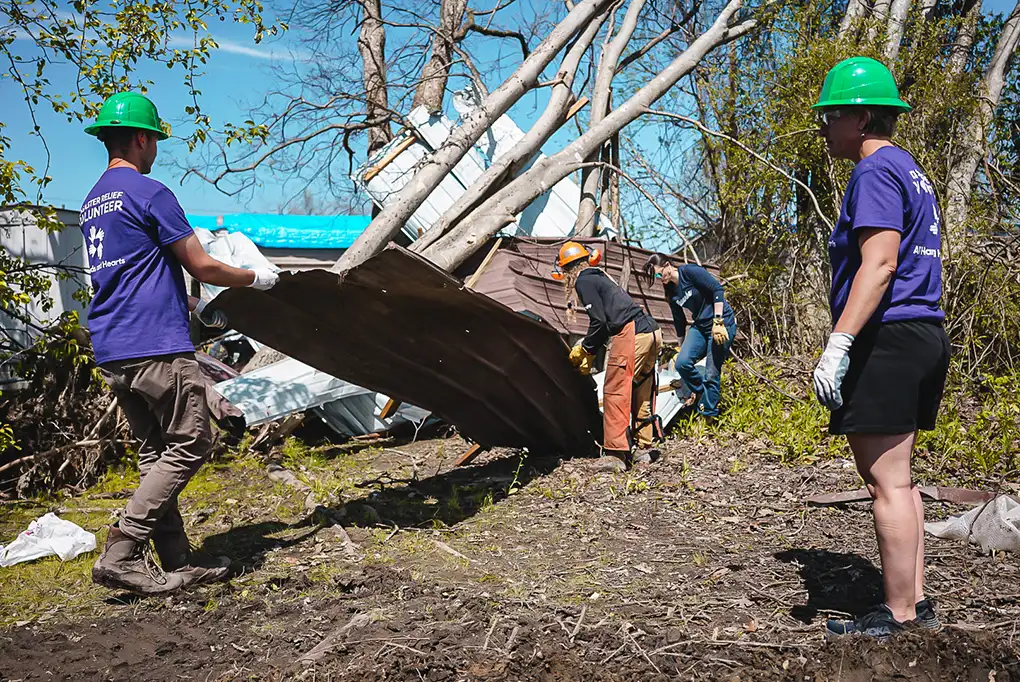
A RECORD BREAKING YEAR
According to the National Oceanic and Atmospheric Administration (NOAA), 2023 was the worst year on record for billion-dollar climate and weather disasters in the United States. As of November, the country experienced 25 separate billion-dollar disasters, accumulating more than $73 billion in damages and resulting in over 460 fatalities. In the past five years, the annual average of billion-dollar events in the US has more than doubled compared to the average since 1980.
All Hands and Hearts responded to the highest number of disasters in our nearly two decades of operations, conducting 16 response programs this year, impacting the lives of 60,300 individuals.
Recognizing the escalating severity of disasters, AHAH expanded our capacity to respond by introducing the role of Rapid Response Manager. This addition allowed us to bolster our team and react swiftly to more disasters, ultimately impacting more lives. In the US alone, we responded to 11 disasters, including billion-dollar events like the wildfires that devastated Hawaii in August, Hurricane Idalia, which struck Florida in the same month and the flooding that impacted Northeastern US in July.
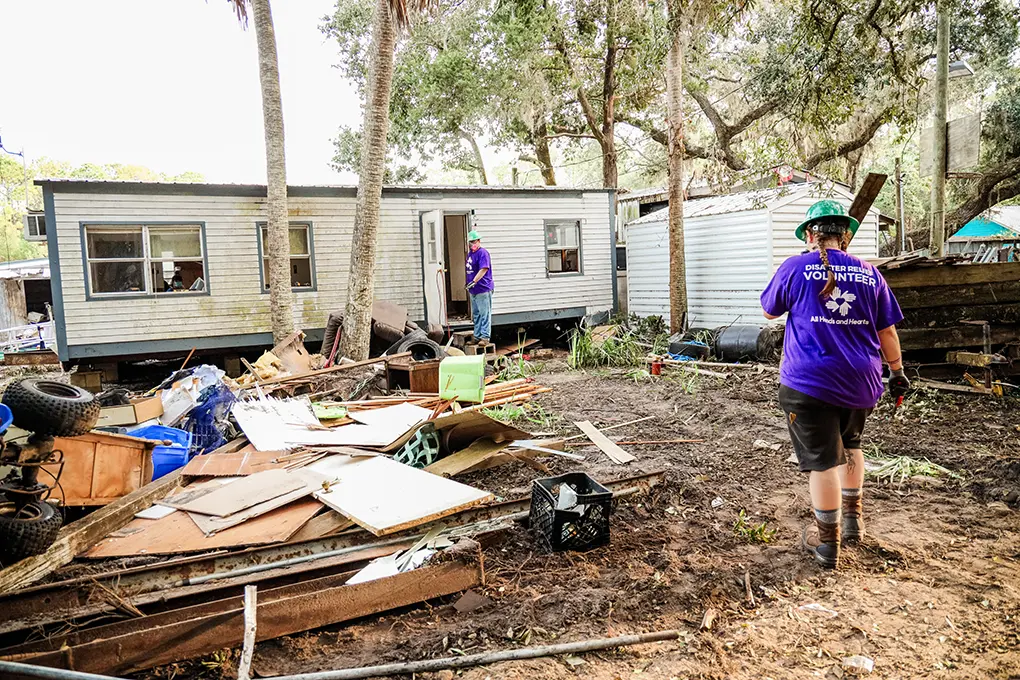
Expanding our response team enabled us to remain flexible and adaptive to the unique needs of the communities we served. A prime example of our commitment to swift but tailored disaster relief is for Hawaii’s wildfires.
HAWAII WILDFIRE RELIEF
In August, when multiple deadly wildfires broke out in Hawaii, AHAH responded within a week, adapting our traditional ‘boots-on-the-ground’ response to support the community remotely. We actively listened to the calls from affected communities, refraining from an immediate deployment of our team to ensure that housing and resources were available for internally displaced persons and evacuees. Collaborating with the Hawaii Volunteer Organizations Active in Disaster we remotely supported Maui-based organizations in on-island volunteer coordination. Only when the call for on-ground assistance came did we deploy our Disaster Assistance Response Team (DART) to begin operations on Maui.
Based in Lahaina, our team is addressing the critical needs of those impacted by working with the Napili Noho Community Hub, distributing vital resources, including food, clothing and blankets, to over 100 families daily. Simultaneously, our team is diligently exploring avenues for sustained, long-term support for the communities recovering from the wildfires over the next two years. Learn more about our Hawaii Wildfire Relief program.
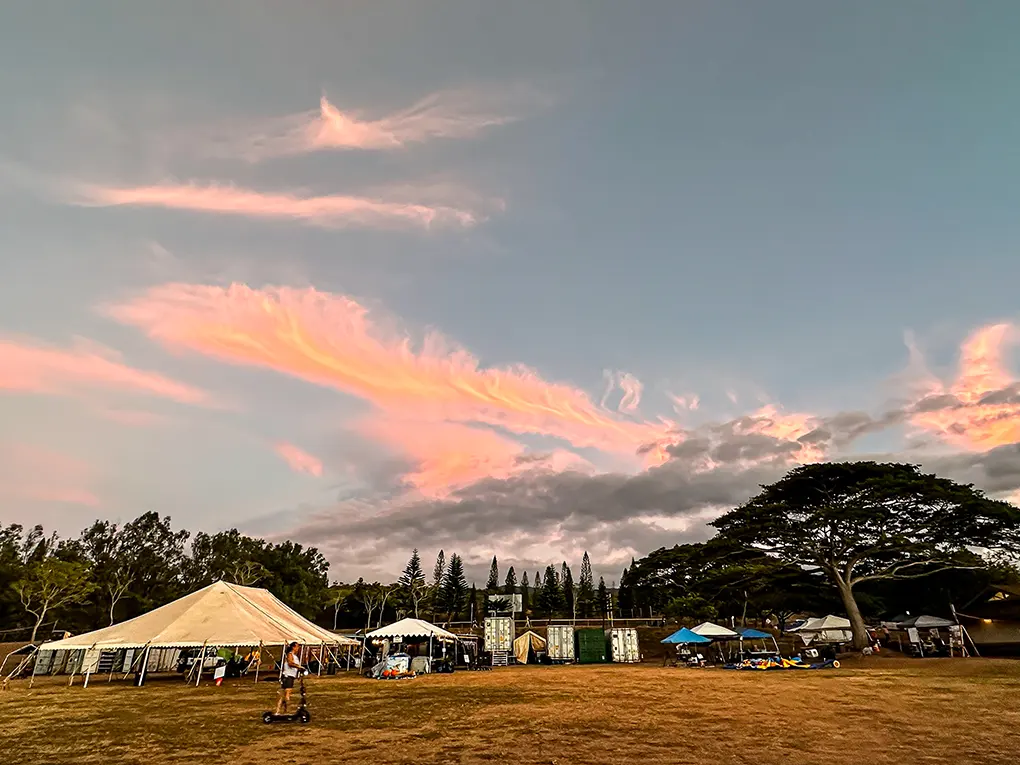
A COMMITMENT TO LONG-TERM SUPPORT
Responding to the escalating severity and frequency of disasters demands early action and a sustained presence. As exemplified by our exploration of ways to support the long-term recovery of Hawaiian communities, our commitment goes beyond immediate relief; it extends to supporting the holistic, long-term needs of communities impacted by disaster.
All Hands and Hearts has been working intermittently in the Philippines for 16 years, providing volunteer-powered disaster relief guided by the affected communities to comprehensively support their needs.
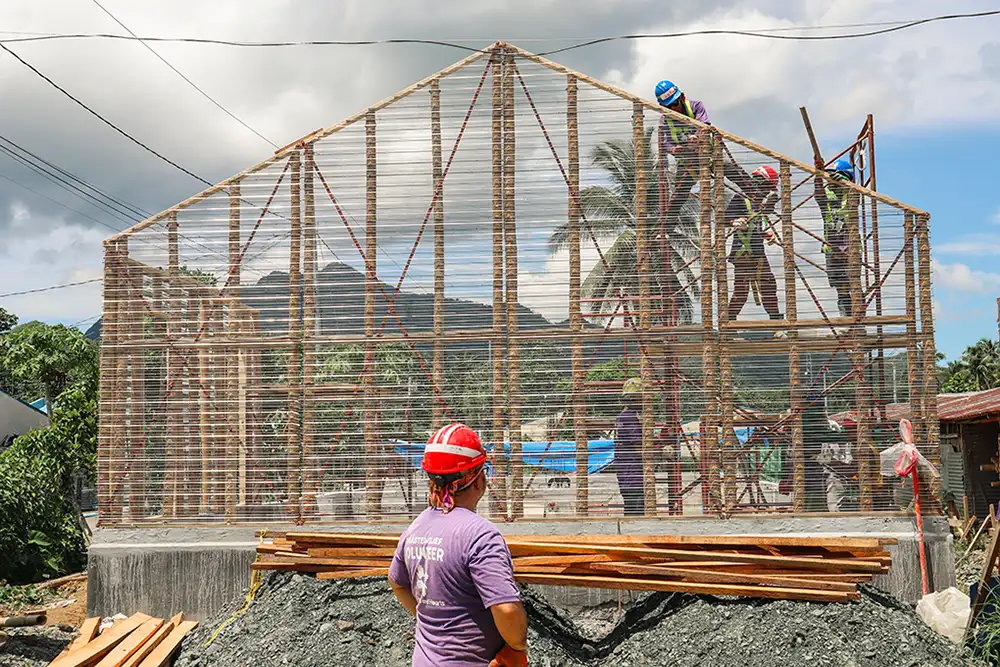
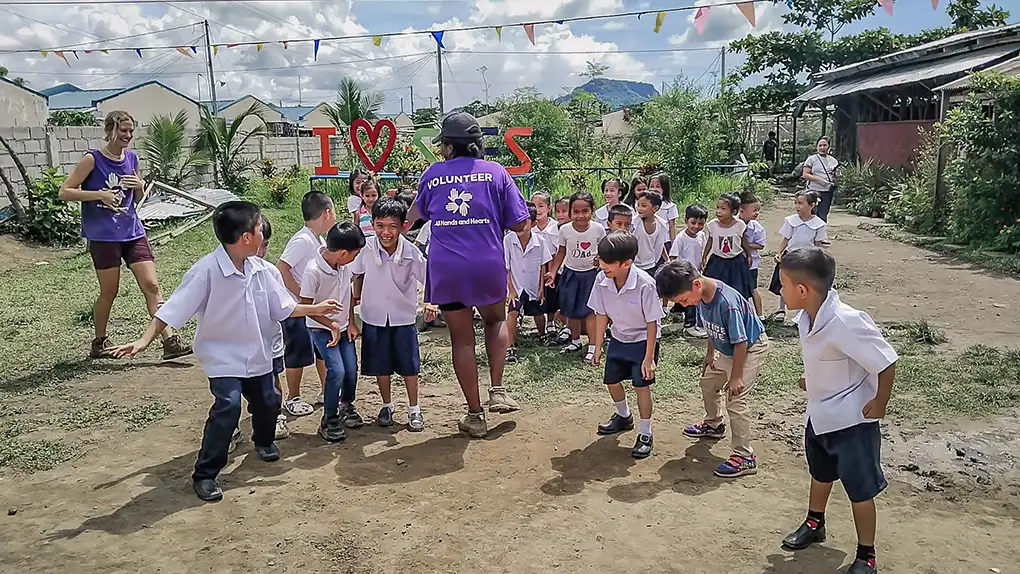
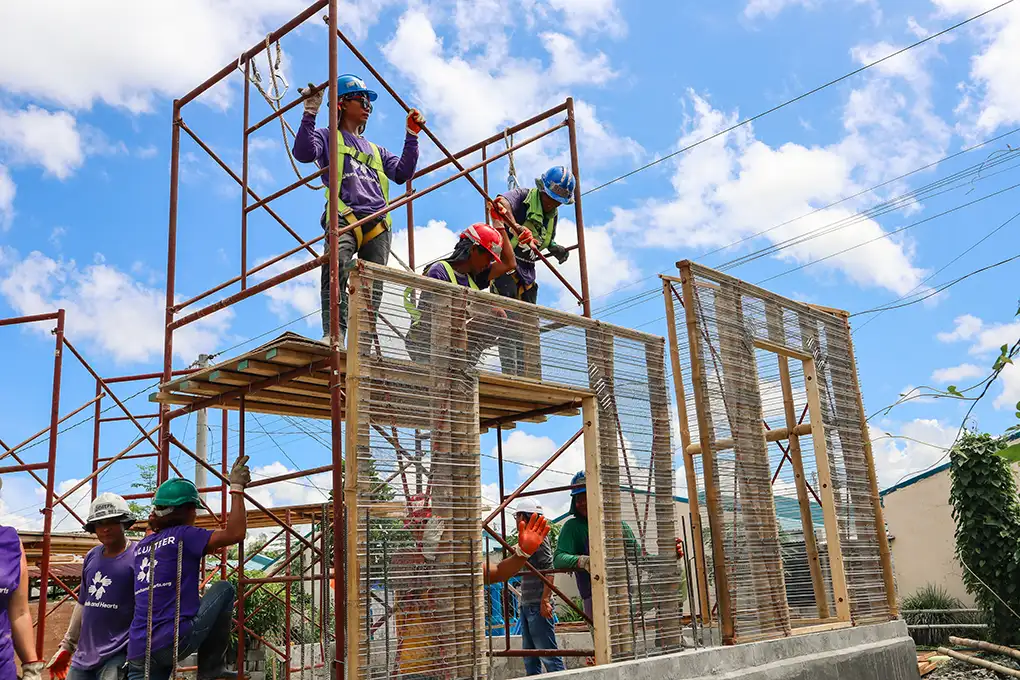
PHILIPPINES TYPHOON RELIEF
Ten years post-disaster, our most recent Philippines Typhoon Relief program addressed the needs of communities impacted by Typhoon Haiyan (known locally as Yolanda). Our work focused on rebuilding the St. Francis School, which, although initially built as a temporary solution post-typhoon, remained in use up until the school’s rebuild.
We used an environmentally sustainable and disaster-resilient construction material known as Cement Bamboo Frame Technology to rebuild St. Francis School. With new toilets and handwashing facilities, we created a permanent, safe and inviting environment for students to learn, grow and thrive.
Following a community-centered approach, we identified needs that went beyond the school’s construction. As part of addressing the lack of access to clean and safe drinking water, we built a rainwater harvesting system that will serve the students as well as the wider community.
In conjunction with the Filipino organization, Streetlight, we facilitated Child Protection training as well as a variety of projects to support the holistic needs of the community, such as installing solar lighting. We also conducted Disaster Risk Reduction (DRR) training to mitigate the impacts of future disasters. Learn more about our Philippines Typhoon Relief program here.
LOOKING AHEAD
Our commitment to providing community-inspired, volunteer-powered disaster relief remains unwavering as we look toward 2024.
We will continue to prioritize those least able to recover on their own and remain dedicated to utilizing resilient, sustainable materials in our projects. Listening to the voices of host communities—embracing their input and addressing their concerns —remains at the core of our work. Moreover, we are determined to empower at-risk communities through DRR training, equipping them to face future disasters with resilience and preparedness.
On Maui, Hawaii, our ongoing commitment extends to supporting communities recovering from wildfires. Across Mexico, Nepal and the Philippines, our efforts will be concentrated on post-disaster school reconstruction, complemented by comprehensive DRR. In Florida, where the impact of Hurricane Ian is still prominent, we continue our work to repair and rebuild affected homes. We will continue to provide expanded support for refugees and internally displaced persons in Ukraine and Poland.
Lastly, we stand prepared to extend our assistance to the as-yet-unknown locations impacted by future disasters in 2024.
Our work is possible because of you.
Let’s unite to make a difference. We’re all in. Are you?



